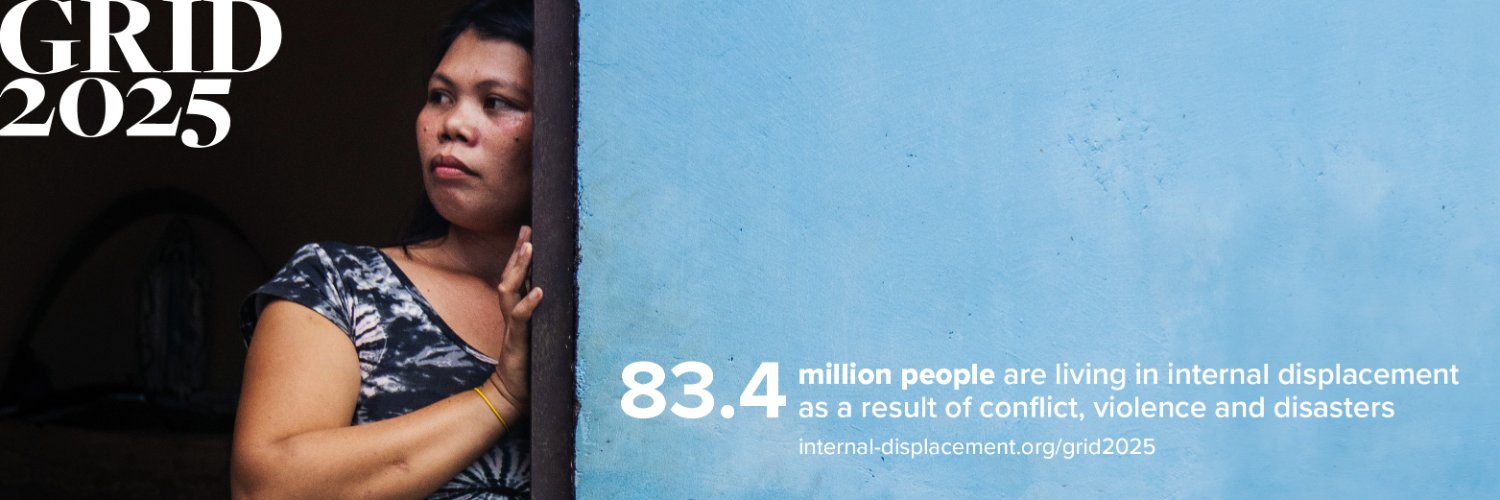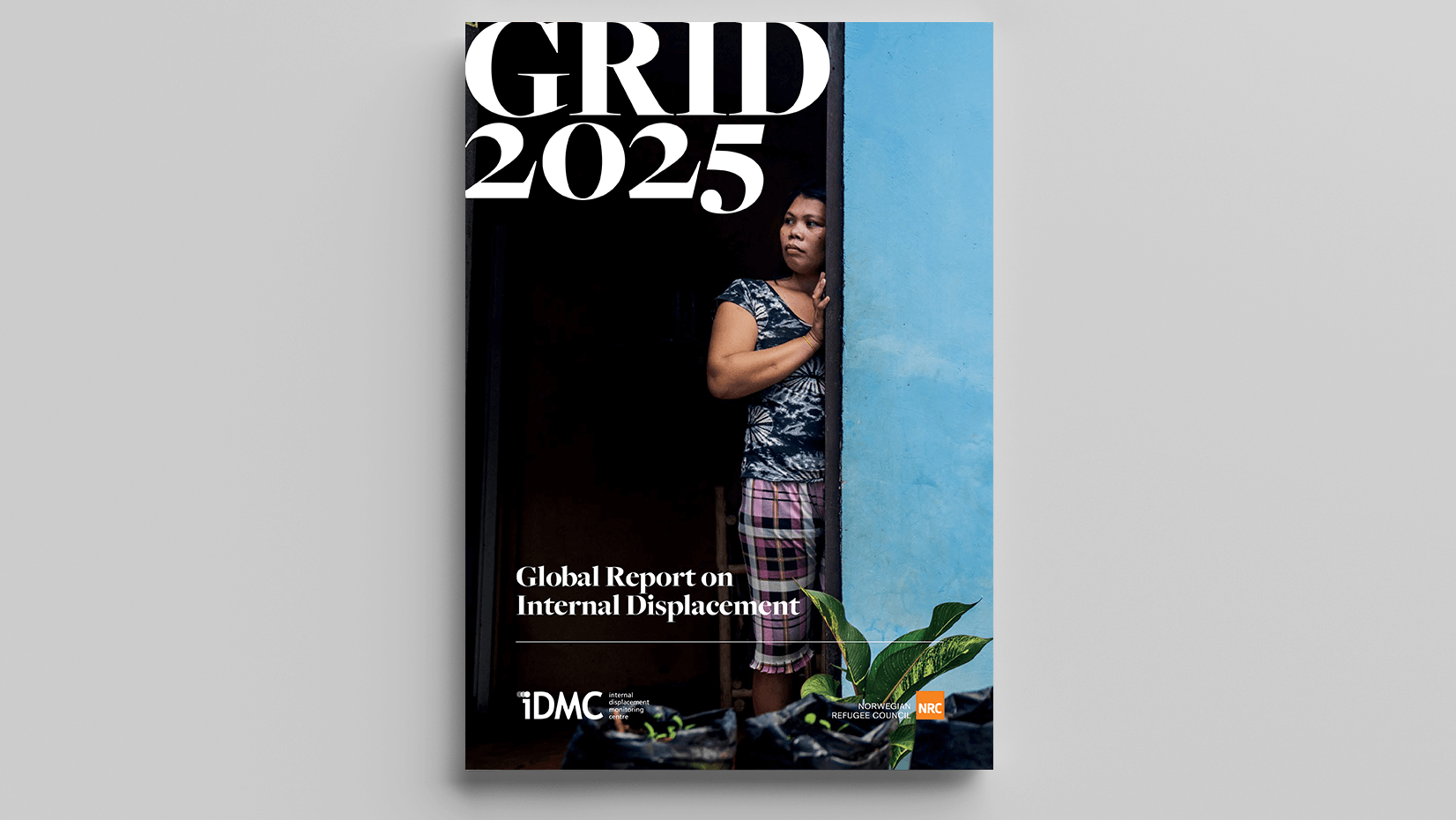
IDMC
@IDMC_Geneva
Internal Displacement Monitoring Centre. The world’s leading source of data and analysis on #InternalDisplacement. Join our newsletter: http://bit.ly/3ebmcHd
🚨 OUT NOW: Global Report on Internal Displacement 2025 A record 83.4 million people are living in internal displacement. Explore the data, trends & insights from #GRID2025 👇 bit.ly/4dhB2qb

📍Mozambique: 718,000 people are living in internal displacement When Cyclone Chido struck last December, it displaced hundreds of thousands. Again. Many had already been uprooted by conflict & violence. These overlapping crises are delaying their recovery. Read their story 👇
Natalia’s family survived Cyclone Chido last December, but months later they’re still struggling. Aid cuts mean they’re rebuilding with scraps, caring for terrified children and family with a disability. Mozambique's most vulnerable are being left behind. brnw.ch/21wUdfD
❗️Sudan is the world’s largest displacement crisis. Ongoing hostilities are forcing people to flee again and again, with fewer places to go. Since April, hundreds of thousands have arrived in Tawila, a small town in North Darfur. They face hunger, cholera & limited aid. More👇
BREAKING: #Sudan: “There is no food. No toilets. No clean water. People are sleeping in the dirt” – NRC’s Sudan Director on Tawila, where 379,000+ displaced people have arrived since April. Cholera is spreading. Aid has run out. Our latest press release: nrc.no/news/2025/july…
🟠Conflict 🟠Disasters 🟠Poverty Cameroon is facing overlapping crises. At the end of last year, 1.1 million people were living in internal displacement. This year, Cameroon tops @NRC_Norway's list of the world's most neglected displacement crises. Watch to learn more 👇
#Cameroon was the world’s most neglected displacement crisis in 2024, with over 1.1 million people internally displaced. Our colleague Patricia tells you what you need to know ⬇️
⚠️ HDX Signal for #China: Nearly 1 million people have been internally displaced by storms and floods across multiple provinces since 20 June 2025, according to data from @IDMC_Geneva. Stay informed: data.humdata.org/visualization/…
Can community-based action reduce disaster displacement? In Gambia, early results say it can. 💪 Floods trigger most disaster displacements. But Gambia’s new disaster management policy & strategy are mitigating their impacts. By putting communities at the heart of the response.
🌊Disaster displacement can affect anyone, anywhere. But it's not inevitable. With reliable data, targeted policies & long-term investments, decision-makers can reduce the scale and impact of disaster displacement.
Learn how to prevent and manage disaster displacement in your community with this FREE online course ⛈💡 🌞 ➡️ ow.ly/Ogyo50WnV1q @NRC_Norway @DDisplacement @UNmigration @IOM_MECC @Refugees @IDMC_Geneva @ifrc
📍 Sudan. Syria. Colombia. DR Congo. Yemen. Over half of all people internally displaced by conflict & violence live in just these five countries. Many have fled multiple times, many have been displaced for years. They need immediate aid & investments in long-term solutions.
📍Yemen: 4.8 million people were living in internal displacement at the end of 2024, the 6th-highest figure globally. While conflict displacements have decreased since 2022, limited access to basic services & livelihoods continues to prevent millions from rebuilding their lives.
Many displaced families in #Yemen live in small camps with no basic services. We are on the ground, providing ID papers, solar powered lighting, clean water and hygiene kits, with support from @ECHO_MiddleEast as part of the Yemen Displacement Response Consortium.
In 2024, historic floods in Rio Grande do Sul triggered 775,000 internal displacements. 🌊 Now, floods in Brazil are again displacing thousands of people. To reduce future risks, we need to include displacement data in disaster plans & policies.
People forced to flee disasters face both economic & non-economic losses and damages. Internal displacement is one of them, disrupting lives, & livelihoods. Development financing, including investments in disaster risk reduction, can reduce the scale & impacts of displacement.
💸 Disasters cost more than we realise. Broken economies, deepening poverty: the fallout keeps growing. At #FFD4 in Sevilla, Spain, leaders have a choice: keep responding to costly disasters – or invest in resilience. #FinancingOurFuture
Internal displacement is growing rapidly 📈 Today, 80% of internally displaced people live in low- and lower-middle income countries, where displacement can undermine development progress. Development financing can help governments address displacement sustainably. #FFD4
📊 Disasters triggered nearly 265 million forced movements of people over the past decade. Storms & floods drove 89% of these internal displacements. Disaster displacement is not inevitable. Better data, targeted policies & long-term investments can reduce its risks & impacts.
🌍 This #DesertificationandDroughtDay, we're highlighting the risk of drought displacement in the Horn of Africa. Our model estimates how many people, in any given year, could be displaced by drought and floods in Ethiopia, Somalia & Sudan. Swipe for the figures ⬇️
Disasters triggered 264.8 million internal displacements in the past decade 🌊 In 2024 alone, disasters forced people to flee 45.8 million times, the highest figure on record. Disaster displacement isn't inevitable. With reliable data, governments can reduce risks & impacts.
Conflict displaced millions of people last year, many of them more than once. Sudan & DR Congo made up nearly half of all conflict-related movements of people. Investments in recovery & lasting solutions can help people rebuild. More in #GRID2025 ➡️ bit.ly/4dhB2qb

This map shows where millions of people need help but receive barely any attention or funding. Share to show your support to those affected by the world’s most neglected displacement crises 🧡